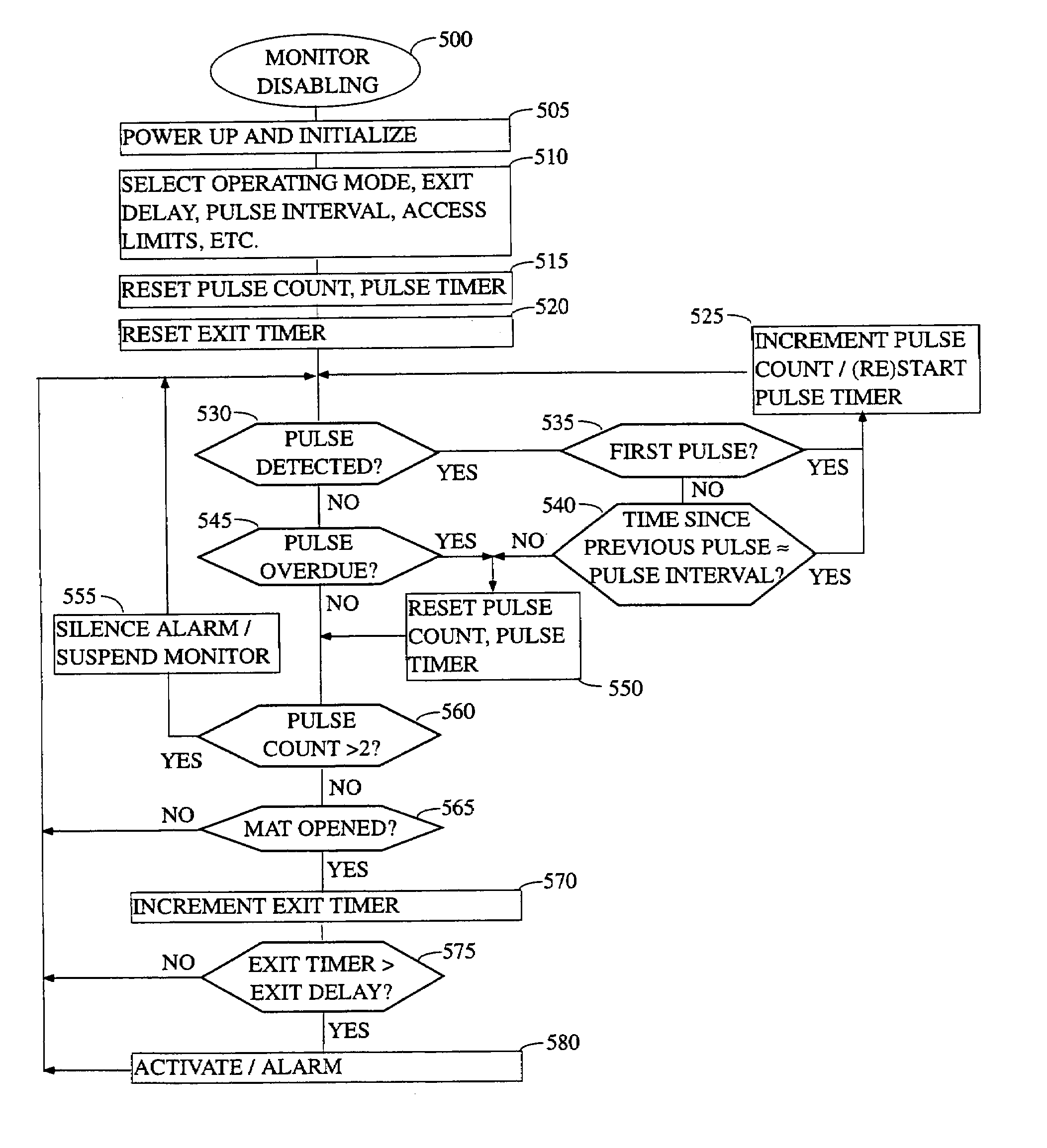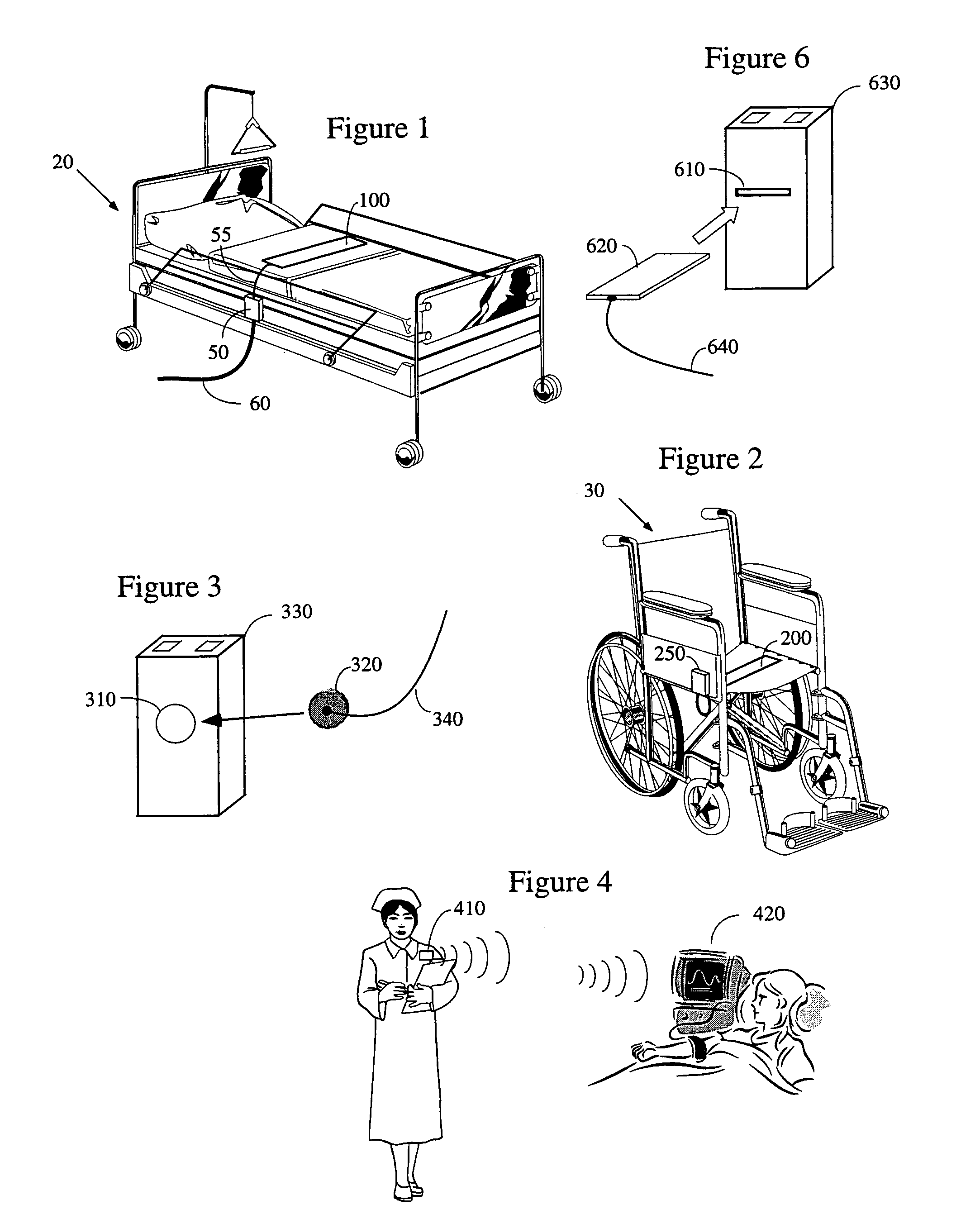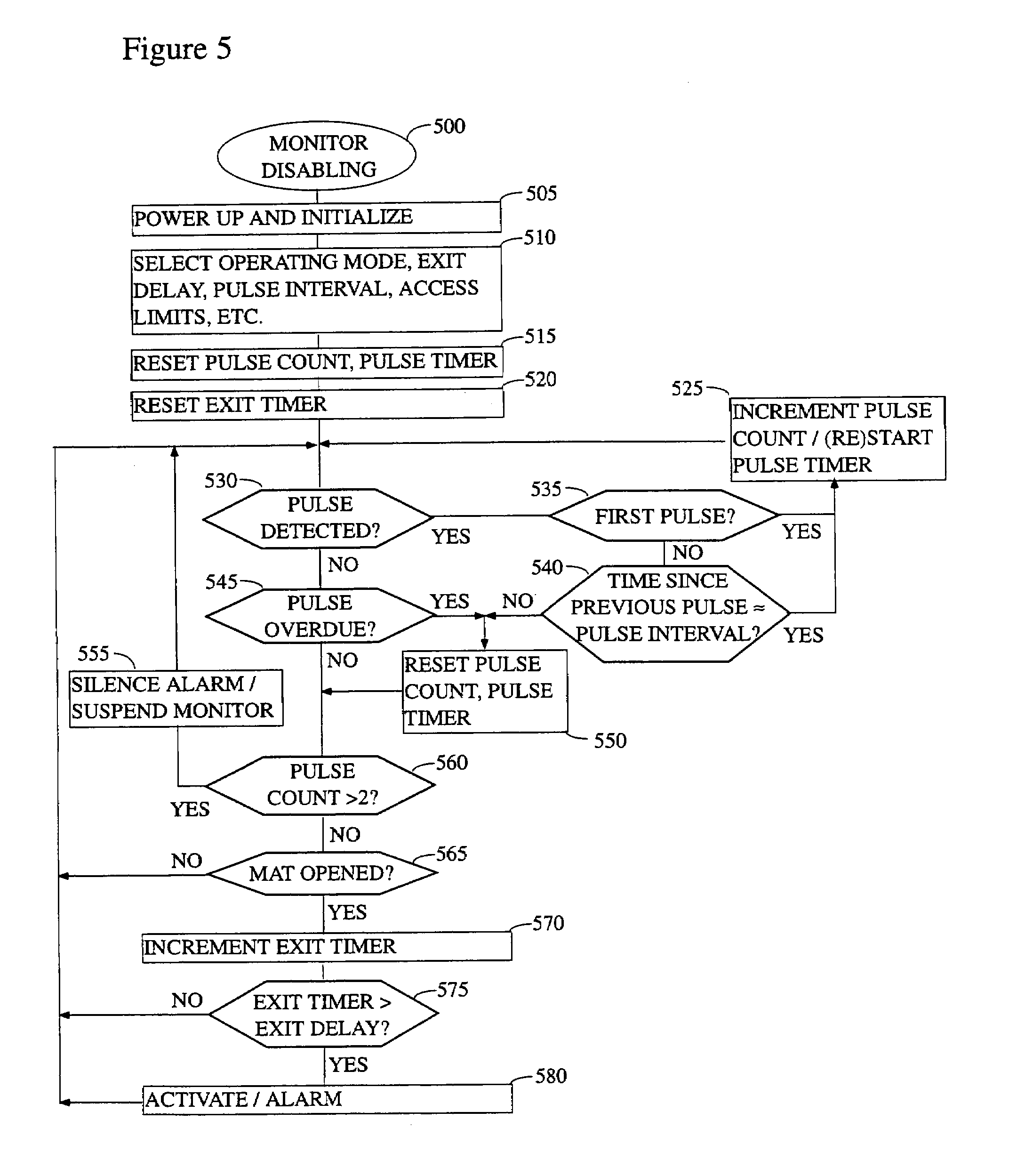Method and apparatus for temporarily disabling a patient monitor
a patient monitor and temporary disassembly technology, applied in the field of patient monitoring systems, can solve the problems of actual cost of treating the victim, poor general health, and less likely to recover quickly from their injuries, and achieve the effect of higher training and expertis
- Summary
- Abstract
- Description
- Claims
- Application Information
AI Technical Summary
Benefits of technology
Problems solved by technology
Method used
Image
Examples
Embodiment Construction
[0034]In accordance with a preferred aspect of the instant invention, there is provided a patient monitor that will be disabled when a caregiver enters a room and that is automatically reactivated after the caregiver leaves. Preferably, at least the monitor's alarm function will remain disabled during the time the caregiver is proximate to the patient, with the alarm and other functions being automatically reactivated after the caregiver has moved away. In a preferred scenario, the instant monitor would be used in connection with a patient exit monitor, thereby allowing the caregiver to maneuver the patient within the bed or chair (or to temporarily remove the patient therefrom) without triggering the alarm.
GENERAL ENVIRONMENT OF THE INVENTION
[0035]Turning first to FIG. 1 wherein the general environment of one specific embodiment of the instant invention is illustrated, in a typical arrangement a pressure sensitive mat 100 sensor is placed on a hospital bed 20 where it will lie bene...
PUM
 Login to View More
Login to View More Abstract
Description
Claims
Application Information
 Login to View More
Login to View More - R&D
- Intellectual Property
- Life Sciences
- Materials
- Tech Scout
- Unparalleled Data Quality
- Higher Quality Content
- 60% Fewer Hallucinations
Browse by: Latest US Patents, China's latest patents, Technical Efficacy Thesaurus, Application Domain, Technology Topic, Popular Technical Reports.
© 2025 PatSnap. All rights reserved.Legal|Privacy policy|Modern Slavery Act Transparency Statement|Sitemap|About US| Contact US: help@patsnap.com



